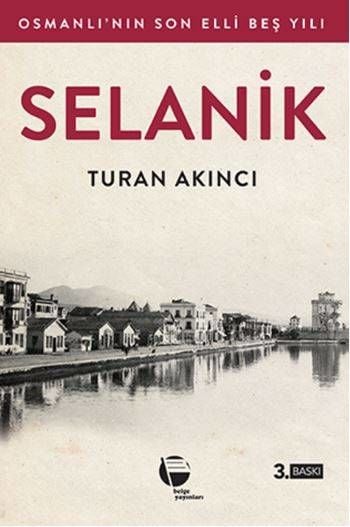
Selanik
The book Thessaloniki in the Ottoman Empire 1869-1924 reveals the intersection of the Ottoman Empire and the new Republic in every sense, in terms of the period it covers. Surprisingly, many key elements of the transformation from a feudal empire to a new republic are always associated with the city of Thessaloniki. Moreover, traces of this transfer can be seen even in 21st century Turkey. Sultan II. From Abdulhamid to the Unionists, from the Ottoman civil authorities to the future founders of the Republic, from school soldiers to regimental soldiers, from Masons to Abdetites, from rich city leaders to Levantines; From the obedient Jewish villagers to the ignorant Muslim population, from the Serbian, Montenegrin and Macedonian separatists to the Bulgarian committee members, everyone is a "traitor" in someone else's words. And that is to say, Thessaloniki, the brightest success story in the Ottoman Empire in terms of economic and urban development, is the home of all these traitors. The book Thessaloniki in the Ottoman Empire 1869-1924 once again reveals how the search for unity destroyed both the Ottoman Empire and the Balkans. It is unnecessary to talk about a single one, because it is all the "traitors" of Thessaloniki who create the value jointly and then destroy it together. Today, when Thessaloniki is mentioned, people from Turkey only think of the city where Mustafa Kemal was born.
Those who go to see the city only see Mustafa Kemal's house and return, but they are unaware of the great history and culture that took place in this city. Thessaloniki, thought to be a typical Greek city, is one of the first places conquered by the Ottomans in Rumelia. In the late 19th century, it became the most educated city of the Ottoman Empire as a result of a multi-religious and multicultural education race created by Turks, Avdeti, Jews, Greeks, Bulgarians and Serbs. All of this was triggered by economic development based on production and exports. It is the city of Thessaloniki that gave life to the Committee of Union and Progress, which could not achieve significant success abroad for 17 years. The city of Thessaloniki, which guided the declaration of the Constitutional Monarchy to the March 31 Rebellion, from the end of the Abdulhamid era to the end of the Ottoman period, seems to have hidden behind a curtain of fog after the population exchange. Riches, experiences, lives and memories are on the other side of the water, winking at us from the pages of this book so that we can better understand some of the situations of today's Turkey.
(From the Promotional Bulletin)
Dough Type: 2nd Dough
First Printing Year: 2017
Number of Pages: 608
Size: 16x24
Number of Printings: 4th Edition
| Publisher | : | Document Publications |
| Number of pages | : | 608 |
| Publication Year | : | 2017 |
| ISBN | : | 9789753447430 |
| The heart | : | Turkish |


